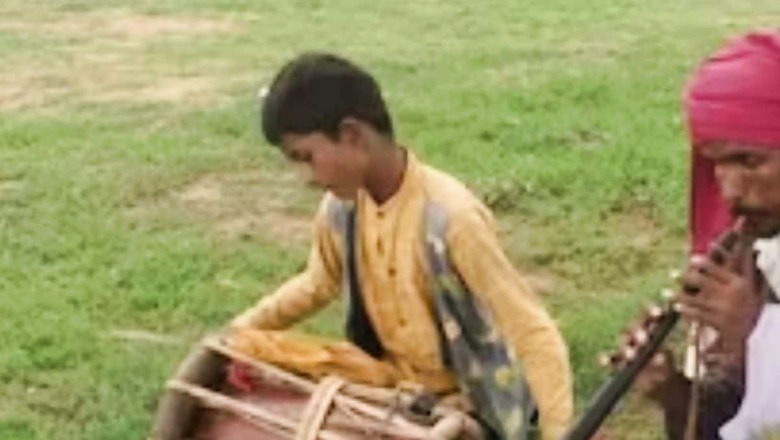
views
Gangireddulata, also known as Ox race, is a traditional folk art form where performers, accompanied by the sounds of Sannai songs and drums, used to wander through village streets. They carried skillfully crafted gangireddu (oxen) and swayed their heads, symbolising blessings and good fortune for households.
However, with changing times, many individuals are adapting to new employment opportunities and leaving behind the practice of Gangireddulata. In Bhadrachalam town of Telangana’s Bhadradri Kothagudem district, it is still a delightful sight to see gangireddu, who once sang Sannai songs with drum instruments, gracing the streets without their decorated bulls.
Venkataiah, a resident of Bhadradri Kothagudem expressed his thoughts on the matter, acknowledging that they, who have upheld the tradition of Gangireddulata for generations, are now confronted with the need to adapt to changing times. He added that the previous generations chose not to involve their children in this profession to spare them the hardships they endured. As a result, the practice of Gangireddulata is gradually fading away. Nonetheless, gangireddus remain iconic figures in Telugu states, particularly during the festive occasion of Sankranti.
In addition to Gangireddulata, other traditional performers add charm to the cultural landscape. The Budabukkala people arrive in the early morning, invoking the blessings of Amba Paluku Jagadamba Paluku. The Tappetagullas sing the Ramayana song “Rama Rama,” while the Jangamadevara fill the air with auspicious chants of “Shubham Shubham” while blowing the conch shell.
The acrobatic displays performed with adorned gangredds never fail to captivate the spectators. The game of Gangireddu also holds numerous legendary tales. One such tale revolves around Gajasura, a demon who once undertook severe penance to gain the favour of Lord Shiva. Pleased with Gajasura’s devotion, Lord Shiva granted him a boon, allowing him to dwell in his own belly. However, as Lord Shiva prolonged his absence from Kailasa, Goddess Parvati became troubled.
Upon hearing Goddess Parvati’s concerns, she approached Lord Vishnu, seeking his assistance in finding Lord Shiva. Lord Vishnu promptly located the latter’s whereabouts. He, along with Lord Brahma and other deities, transformed into artists skilled in playing Sannai drums and various instruments. They adorned Shiva’s vehicle, Nandi Ishvara and journeyed to the city where Gajasura resided, creating enchanting music along the way.
Captivated by their extraordinary talents, Gajasura invited them to perform the game of Gangireddu before him. The artists showcased their brilliance and Gajasura granted them their desired boon. Nandiswara, the Gangireddu adorned by Lord Shiva, had come on behalf of his master Shankara.
Gajasura asked for Lord Shiva’s release, and upon recognising Lord Vishnu and Lord Brahma, Nandi swiftly pierced Gajasura’s abdomen with his sharp horns, liberating Lord Shiva. This event is the reason why gangireddus hold such significant historical importance and it is believed that donating to them brings about favourable outcomes.















Comments
0 comment